Op Sindoor: A Paradigm Shift in India’s Post-Pokhran-II Strategic Thinking
India’s ‘Operation Sindoor’ against Pak-based terror infrastructure, just over two weeks after the cold-blooded massacre of 26 Hindu tourists in Pahalgam in Jammu and Kashmir on April 22, has drastically altered the sub-continent’s security environment. It marks a radical departure from the perceived ‘deterrence’ that overshadowed strategic thinking in the region since both India and Pakistan officially went nuclear in 1998.

Past Post-Pokhran II Conflicts
The first Indo-Pak conflict in the nuclearized sub-continent was witnessed in Kargil in 1999 when India took very limited military action to evict a mix of Pakistani soldiers and terrorists (euphemistically called ‘irregulars’) from the mountain heights in Kashmir.
The Vajpayee government took all precautions that the IAF jets didn’t cross the LoC, ostensibly to avoid any risk of escalation, least of all nuclear. Next came the Parliament Attack of 2001 when the same government launched ‘Op Parakram’ which led to massive deployment of troops on the Indo-Pak order.
But it was more for ‘demonstration effect’ and a clever non-kinetic strategy to bleed Pakistan economically. Islamabad was forced to match the deployment on the borders, boot for boot, and ended up spending six times more than India (Pak economy being one-sixth of India at that time) during the one year of deployment. The measure paid off as it forced then Pak PM Nawaz Sharif to rush to the US, pleading for Washington’s intervention for withdrawal of troops by India.
India didn’t take any military steps in the wake of the 2008 Mumbai terror attacks, the biggest on Indian soil that killed 166 people. Instead, the Manmohan Singh government tried to work with the US to isolate Pakistan and bring the masterminds of the attack to justice. It is said that India didn’t want to fall for what was seen as a ‘strategic trap’ laid by a desperate Pak army which wanted a military confrontation with India to avoid fighting with the US and against its Jehadi allies in the post 9/11 ‘War on Terror’.
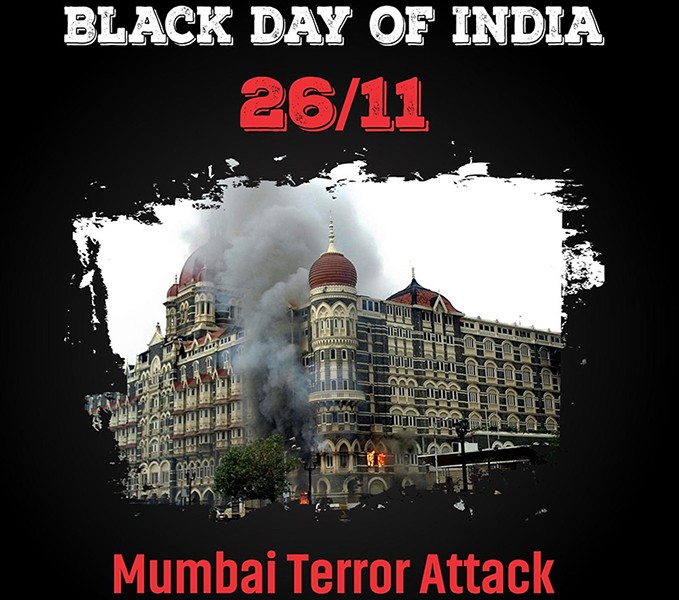 The 26/11 terror attack in Mumbai had remained unavenged militarily. Photo courtesy: Prahlad Joshi X handle
The 26/11 terror attack in Mumbai had remained unavenged militarily. Photo courtesy: Prahlad Joshi X handle
It was also the time when the world was going through a financial meltdown and a military conflict was the last thing in the minds of the strategists.
‘Op Sindoor’- A New Paradigm
But ‘Op Sindoor’ changed all that and crossed many red lines. It went much beyond the surgical strikes by commandos post the 2016 Uri terror attack and air strikes on a terror pad in Balakot in the wake of the Pulwama attack in 2019. It marked a few firsts, including the first strikes in the Punjab province, Pakistan’s power hub, since 1971. More importantly, India finally called Islamabad’s nuclear bluff. It is also for the first time that one saw exchange of conventional firepower between two nuclear-armed countries on a scale never seen before- not even during the 1962 Cuban missile crisis, the closest the world had come to a nuclear war.

While deciding to strike nine terror pads in Pakistan and PoK, including the headquarters of Jaish-e-Mohammad and Lashkar-e-Toiba, India’s military strategists must have factored in Pakistan’s expected retaliation and the escalation ladder thereafter. Though India’s initial strikes were only on terror infrastructure and that too with standoff weapons without crossing the borders, it would have been indeed naïve to expect the Pak military to remain quiet.
It was India’s massive response to Pak’s retaliation which had targeted Indian military assets and civilians that seems to have put Islamabad on the defensive. Pak is said to have approached the US and raised the nuclear alarm after Nur Khan airbase, its nuclear HQ, was damaged badly by India’s strategic strikes. One could not have missed the subtext (hints) in US Vice President JD Vance conveying ‘alarming intelligence’ from Pak to PM Narendra Modi as widely reported. The fact that the Pak DGMO soon called up his Indian counterpart with the ceasefire offer makes it clear that Islamabad was completely on the backfoot.
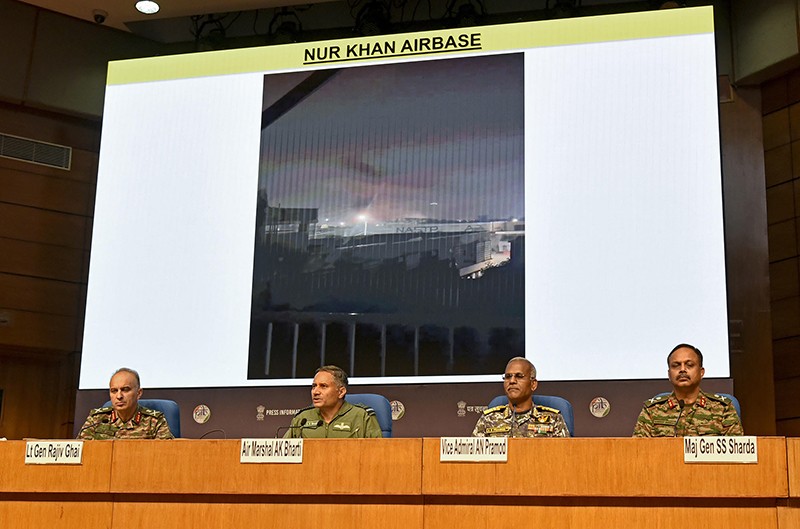 Indian army top brass briefing media in the backdrop of an image of the damaged Nur Khan airbase. Photo: PIB
Indian army top brass briefing media in the backdrop of an image of the damaged Nur Khan airbase. Photo: PIB
A section of experts and people were disappointed that the ceasefire came a bit too early and India should have inflicted more damage on Pak as it had a clear upper hand. But there is always the ‘Fog of War’ and one can only guess what could have been Pakistan’s nuclear threshold and how far India could have gone with strategic conventional strikes without the possibility of any nuclear reprisal. India’s officially declared ‘No First Use’ nuclear doctrine is crystal clear.
Pakistan has no such policy, adding to the uncertainty. There will always be the fear that when pushed to the wall, Pakistan may threaten to press the nuclear button.
I remember noted security expert late K Subrahmanyam’s words after both countries turned nuclear. Regarding Pakistan, which is seen as a failed and rogue state, Subrahmanyam would always tell me that the US kept a hawk-eyed vigil on its nuclear arsenal and would take no time to intervene if it found anything amiss. How prophetic. It seems something of this sort might have happened, prompting the US to shun its ‘hands off’ approach as seen in the initial days. It is evident from the alacrity with which the Trump Administration activated its hotlines to nudge a quick truce.
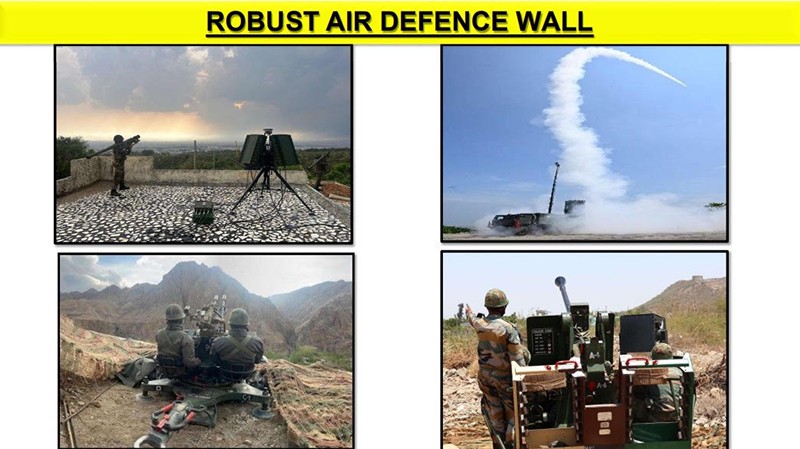
The fast-paced developments since the launch of ‘Op Sindoor’ on May 7 seem to have gone largely as per the dotted script. There is no doubt that India has changed the rules of engagement bypassing the nuclear threat. Even when the ‘understanding’ of a truce was being announced, New Delhi made it clear that in future, an act of terror will be considered an act of war. Clearly the terror threshold has changed for India in what is being called a ‘new normal’.
In his Address to the Nation, Modi described ‘Op Sindoor’ as India’s new policy against terror. The PM also didn’t mince words to say India will not tolerate Pak’s nuclear blackmail and called it a “halt” in operations.
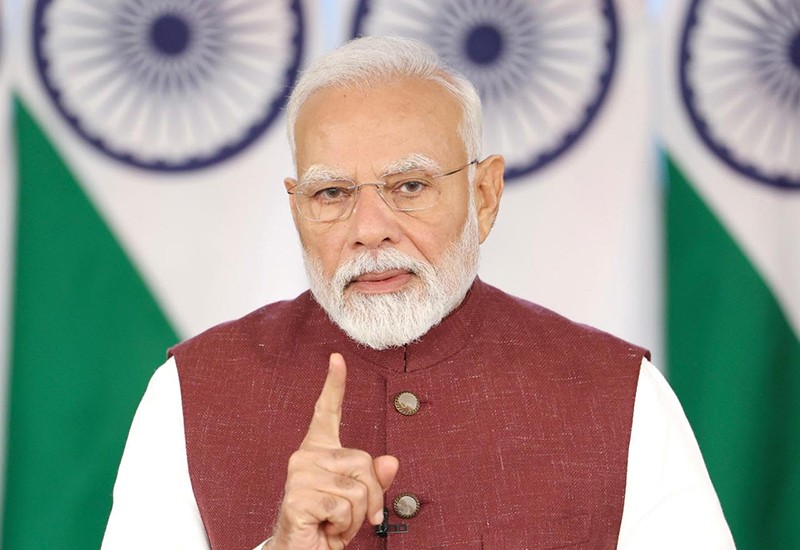 Paused, not over: PM Modi issues a stern warning to Pakistan in an address to the nation. Photo: PIB
Paused, not over: PM Modi issues a stern warning to Pakistan in an address to the nation. Photo: PIB
‘Op Sindoor’, Pak’s retaliation and India’s subsequent punitive strikes, fought with standoff weapons (missiles) and kamikaze drones (loitering munitions), made it markedly different from all previous conflicts between the two nations. It was a textbook case of modern warfare with no troops, tanks or aircraft crossing the borders from either side. In that sense, ‘Op Sindoor’ also turns a new chapter in the art of war.
A bit about the definition of war. Post-World War II, wars have been seldom declared officially by the parties concerned. It’s called conflict, military action or euphemistically kinetic action. Everywhere, it’s the same nomenclature. This has a psychological dimension and leaves room for de-escalation. In a declared war, there can only be the victor and the vanquished. There is no face-saver. But today, the end comes with a ceasefire or end of hostilities. There is no finality –winners or losers-- at least for public consumption.
Contrary to the social media chatter, the US coming into the picture in the present conflict is nothing unusual and has to be seen in this light. You need a third power to broker peace between two warring parties.
India’s Subtle Messaging
Now, about India’s subtle messaging. First, the name itself--‘Op Sindoor’-- brought the emotions of Pahalgam massacre and then the sight of Foreign Secretary Vikram Misri flanked by two women from different faiths (Col Sofiya Qureshi and Wg Com Vyomika Singh) during media briefings sent out a clear message to the terrorists, Pakistan and the world.
As Misri and his two defence colleagues briefed the media sans hyperbole in the initial days, many felt India was losing the propaganda war, especially in the face of Pakistan’s high-pitched claims, some of them sourced from social media. Even in the face of Pak claiming “victory” after the announcement of ‘pause’ in military action by both sides, Indian officials maintained verbal restraint as is expected of a mature nation. Statecraft cannot be based on sentiments going viral in social media.
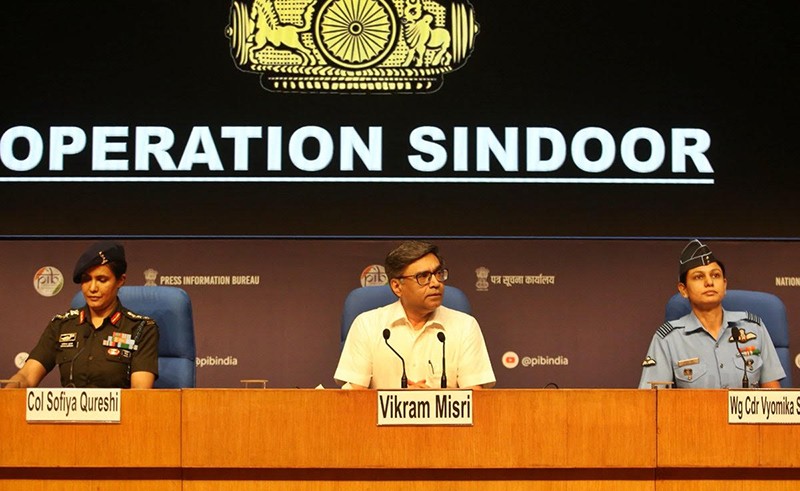 India's subtle messaging with two women from different faiths flaking Foreign Secretary Misri at the briefing. Photo: DD News
India's subtle messaging with two women from different faiths flaking Foreign Secretary Misri at the briefing. Photo: DD News
India's actions on the ground speak much louder than any claims made from across the border. ‘Op Sindoor’ has met all its objectives and much more. India has also made it clear that non-kinetic measures like suspension of the Indus Water Treaty and trade boycott will continue. Terror and trade, water and blood cannot go together, as Modi said in his address.
Pakistan will now need to have a fresh look at its proxy war strategy. For the Pak military-terror complex, it will never be the same again!
IBNS
Senior Staff Reporter at Northeast Herald, covering news from Tripura and Northeast India.
Related Articles

Congress pulls out of J&K Rajya Sabha race, accuses National Conference of denying safe seat
The Congress party has decided not to contest the upcoming Rajya Sabha elections in Jammu and Kashmir, citing dissatisfaction with its alliance partner, the National Conference (NC), for allegedly denying it a “safe seat.”

India's Patrol Vessel Sachet makes port call at Maputo, delivers 20 metric tonnes of HADR Material to Mozambique
Indian Coast Guard Ship (ICGS) Offshore Patrol Vessel (OPV) Sachet, made a port call at Maputo, Mozambique on Saturday, as part of its ongoing overseas deployment to Africa, underscoring India’s commitment to fostering maritime cooperation with friendly nations.

NDA finalises Bihar seat-sharing deal after weeks of talks; BJP, JDU to contest 101 seats each
After weeks of intense negotiations, the National Democratic Alliance (NDA) has finally sealed its seat-sharing agreement for the upcoming Bihar Assembly elections, Union Minister and BJP leader Dharmendra Pradhan said on X.

UP's Deputy CM Maurya leads delegation that transported Buddha relics to Russia for exposition
An Indian delegation led by Uttar Pradesh Deputy Chief Minister Keshav Prasad Maurya has transferred the relics of Gautam Buddha to Russia’s Kalmykia Republic for an exposition that began on October 11 and will continue until October 18 in Elista, the republic’s capital.
Latest News

Pakistan: Attacker opens fire outside Ahmadi worship place, six security guards hurt

Congress pulls out of J&K Rajya Sabha race, accuses National Conference of denying safe seat

Kareena Kapoor Khan mourns Hollywood star Diane Keaton's demise, names her favourite movies

Kolkata’s iconic Kathi Roll among world’s top 10 wraps: TasteAtlas

